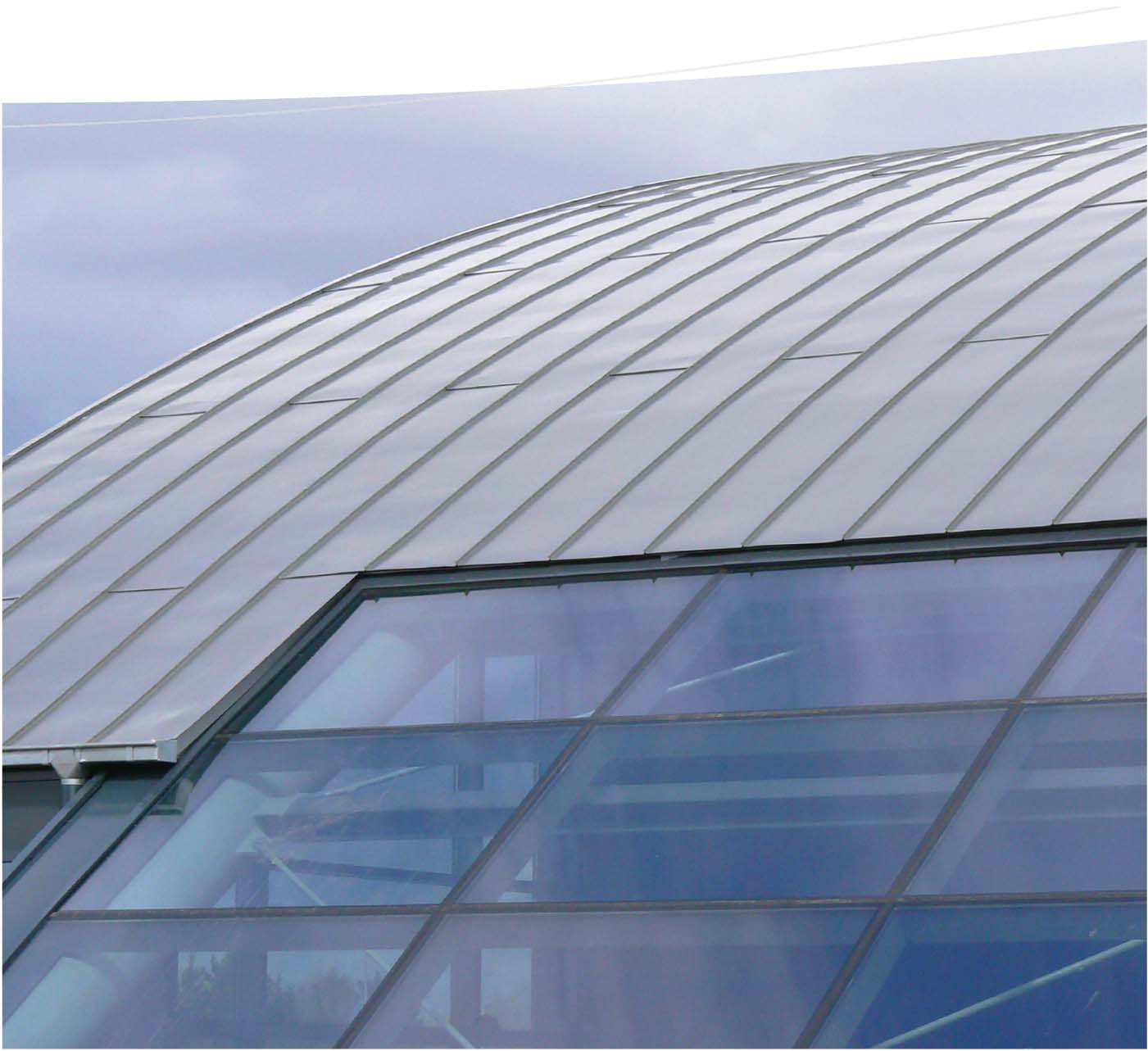Building Physics
A lifespan of between 75 and 100 years is no exception for titanium zinc on a façade or roof, provided it has been properly fi tted. However, building physics plays a major role in this lifespan.
Condensation of vapor against the backside of a titanium zinc construction can cause serious corrosion if certain conditions are not met. Thus it must be ensured that there is sufficient ventilation on the backside of the zinc surface if no other measurements are taken to prevent condensation.

For non-insulated roofs it is enough to support the zinc with a wooden roof deck consisting of rafters and timber boarding. The boarding is placed with a 5 mm gap between the boards. To decrease the capillary action due to contact with the board, the boards should be unplaned. If, however, plywood decking is used to support the zinc covering for example, it is advised that a vapor-permeable layer be placed between the plywood and the zinc to prevent corrosion.
For insulated, ventilated roofs and façades the risk of internal condensation is bigger than for those that are insulated, nonventilated because the difference between the internal and external temperature is on average larger than for non-insulated constructions. To prevent condensation in these cases, a vapor barrier in combination with a ventilated cavity is necessary.
For an insulated construction without ventilated cavity, another insulation system can be used for a quick and easy application. This so called 100% vapor-tight system will prevent condensation problems.